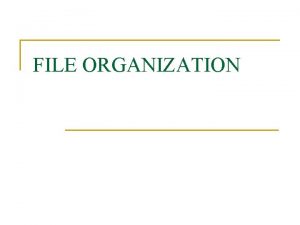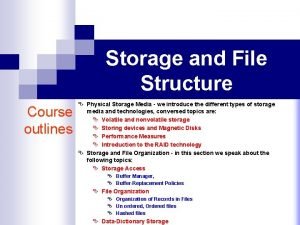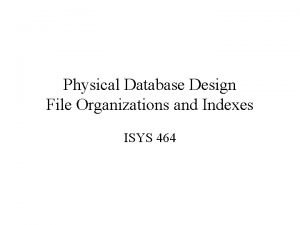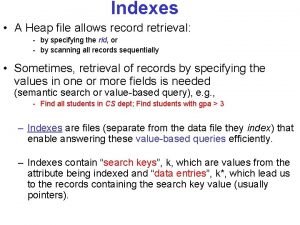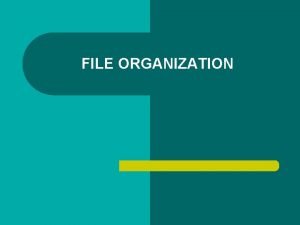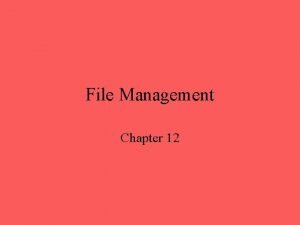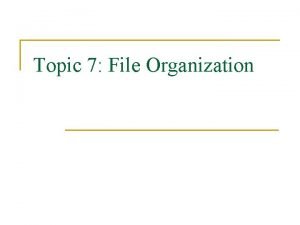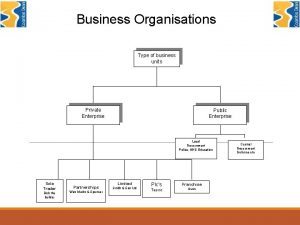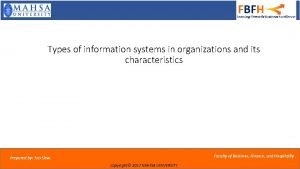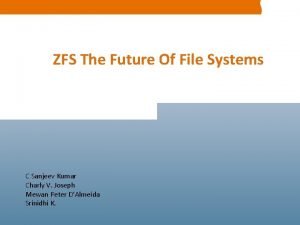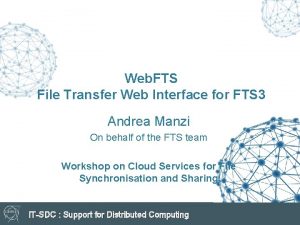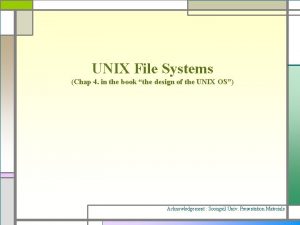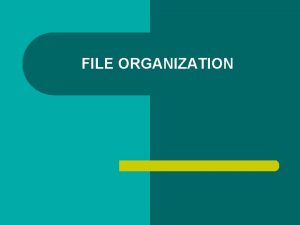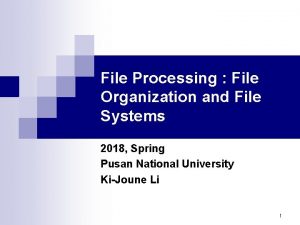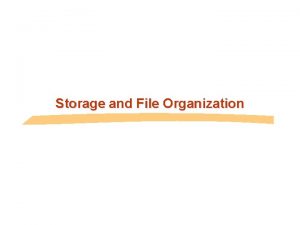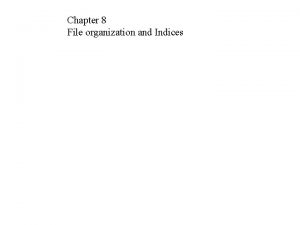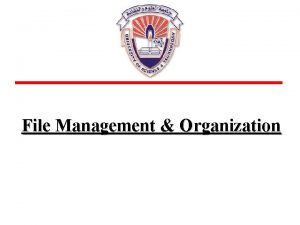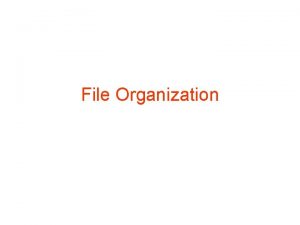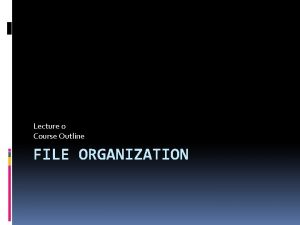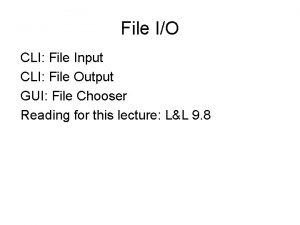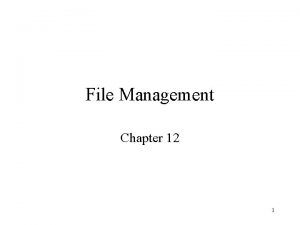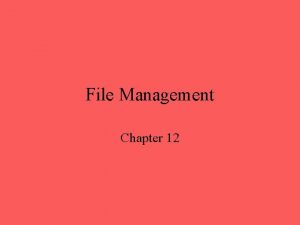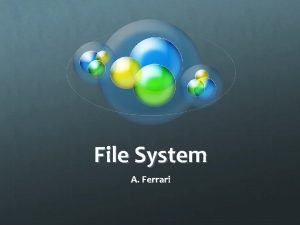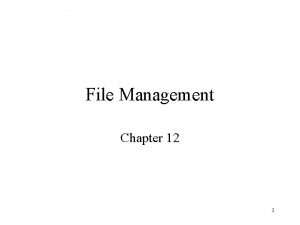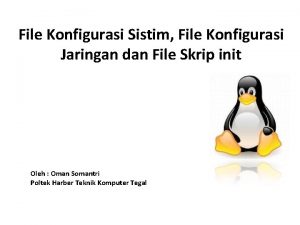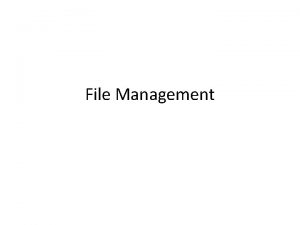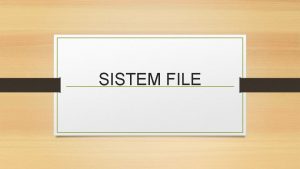FILE ORGANIZATION TYPES OF FILE ORGANIZATION n n





























- Slides: 29

FILE ORGANIZATION

TYPES OF FILE ORGANIZATION n n Serial Sequential Indexed Sequential Direct Access /Random Access

Serial File Organization n n A collection of records No particular sequence Cannot be used as master Used as temporary transaction file Records stored in the order received

Sequential File Organization n n A collection of records Stored in key sequence Adding/deleting record requires making new file Used as master files

Sequential file

The Sequential File organization

The Sequential File organization n To enable a sequential form of records, new records are placed in a log file or transaction file. Then, a batch update is performed to merge the log file with the master file to produce a new file with the correct key sequence

Advantages n n Simple file design Very efficient when most of the records must be processed e. g. Payroll Very efficient if the data has a natural order Can be stored on inexpensive devices like magnetic tape.

Disadvantages n n n Entire file must be processed even if a single record is to be searched. Transactions have to be sorted before processing Overall processing is slow

Direct (Random) File Organization n Records are read directly from or written on to the file. The records are stored at known address. Address is calculated by applying a mathematical function to the key field.

Direct (Random) File Organization n A random file would have to be stored on a direct access backing storage medium e. g. magnetic disc, CD, DVD n Example : Any information retrieval system. Eg Train timetable system.

Advantages n n Any record can be directly accessed. Speed of record processing is very fast. Up-to-date file because of online updating. Concurrent processing is possible.

Disadvantages n n n More complex than sequential Does not fully use memory locations More security and backup problems

Indexed sequential file n n Each record of a file has a key field which uniquely identifies that record. An index consists of keys and addresses. An indexed sequential file is a sequential file (i. e. sorted into order of a key field) which has an index. A full index to a file is one in which there is an entry for every record.

Indexed sequential file



Indexed sequential file n Indexed sequential files are important for applications where data needs to be accessed. . . q q sequentially randomly using the index.

Indexed sequential file n An indexed sequential file can only be stored on a random access device e. g. magnetic disc, CD.

Advantages n n Provides flexibility for users who need both type of accesses with the same file Faster than sequential

Disadvantages n Extra storage space for the index is required

Files I/O in c n n fopen() function It requires two arguments: 1. File Name 2. option(r, w, a, etc)


Batch Processing n n n Batch processing is updating master files periodically to reflect all transactions that occurred during a given time period. The master file is updated at set times or whenever a manageable number of transactions are gathered. Transaction data can either be entered as a batch or as each transaction occurs.

Batch Processing Group source documents into batches. Master file

On-line Batch Processing Enter transactions into system as they occur. Master file

On-line, Real-Time Processing n In on-line, real-time processing, the computer captures data electronically, . . . – – n edits it for accuracy and completeness, and. . . immediately processes it. The computer also processes information requests from users.

On-line, Real-Time Processing Enter transactions into system as they occur. Master file

Advantages of Each Method n n n The main advantage of batch processing was efficiency in processing. On-line data entry is more accurate than periodic batch input because the system can refuse incomplete of erroneous entries. Real-time processing ensures that the information in master files is always current.
 File-file yang dibuat oleh user pada jenis file di linux
File-file yang dibuat oleh user pada jenis file di linux File organisation
File organisation Difference between logical file and physical file
Difference between logical file and physical file Fungsi sistem file
Fungsi sistem file Distributed file system definition
Distributed file system definition What does a markup tag tells the web browser
What does a markup tag tells the web browser In a file-oriented information system, a transaction file
In a file-oriented information system, a transaction file File organization course
File organization course File organization and database design
File organization and database design Heap file organization
Heap file organization Indexed sequential file organization
Indexed sequential file organization Is responsible for all file i/o initiation and termination
Is responsible for all file i/o initiation and termination Indexed sequential file organization
Indexed sequential file organization Process organization in computer organization
Process organization in computer organization Block organization vs point by point
Block organization vs point by point Movie maker file formats
Movie maker file formats Director or manager
Director or manager Advantages of a franchise
Advantages of a franchise Types of farm business organization
Types of farm business organization 3 types of business organization
3 types of business organization Types of information systems in an organization
Types of information systems in an organization Types of healthcare organizations
Types of healthcare organizations Organised retailing
Organised retailing Writable volumes
Writable volumes What does a fact file contain
What does a fact file contain Winman software download
Winman software download Fts file transfer
Fts file transfer How to delete an uploaded file on managebac
How to delete an uploaded file on managebac Iget algorithm in unix
Iget algorithm in unix Advantages of stl file format
Advantages of stl file format

